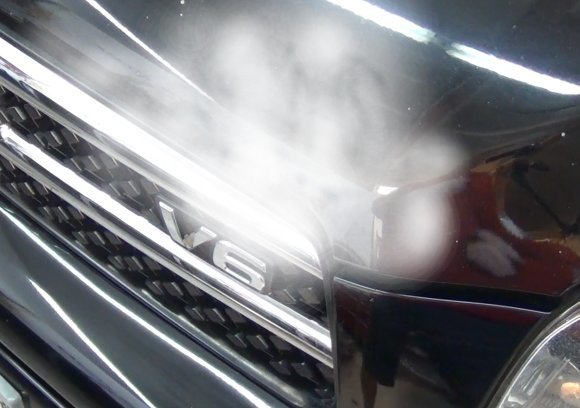Next time this happens, listen for the radiator fan turning on. They draw a lot of current which would explain the battery voltage gauge dropping slightly. That part is normal, but a good observation on your part.
There are two different temperature sensors on the engine. The one for the engine computer is very reliable. The radiator fan will turn on when this sensor reaches 210 degrees, and turn off at 198 degrees. Your mechanic can connect a hand-held computer to the car and read this sensor value to verify proper fan operation.
The second temp. Sensor is for the dash gauge. It too is quite reliable. One unusual thing that can happen is for the thermostat to be slow to respond to changes in coolant temperature. The gauge will go up to "hot", then, when the hot coolant finally reaches the thermostat, it will open, and cool antifreeze will enter the engine from the radiator. The gauge will go back down, and the thermostat might close again. This can happen multiple times until it evens out over a period of up to 10-20 minutes, and usually happens shortly after starting a cold engine. This problem developed on my '88 Grand Caravan after more than 300,000 miles. The cure in this case, if it is really annoying, is to drill the smallest possible hole in the disc of the thermostat, or to buy one with the hole already in it. The resultant very tiny amount of coolant flow will get the higher temperature coolant to the thermostat quicker so it opens up before the gauge goes too high. Most foreign car engines come with thermostats with that bleed hole already in it.
Caradiodoc
Saturday, June 20th, 2009 AT 2:59 AM


